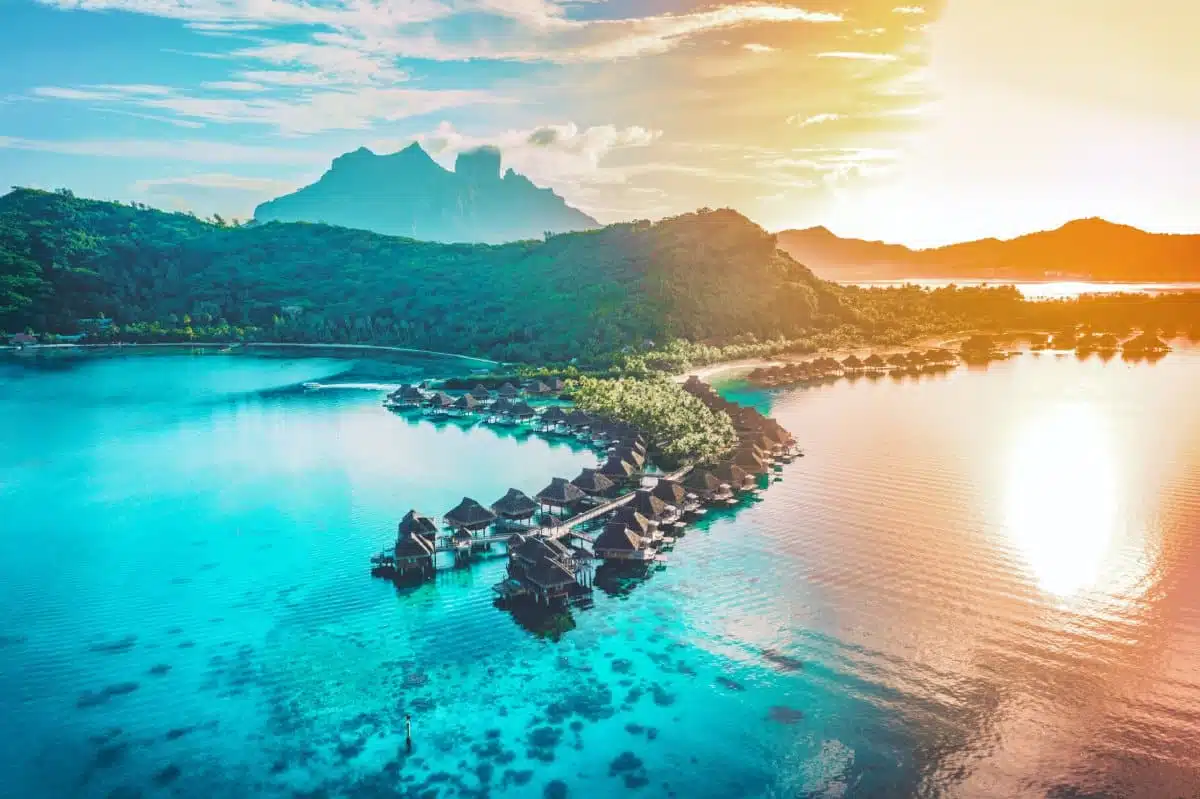French Polynesia, a sprawling collection of islands in the South Pacific, is a destination that captivates with its blend of natural beauty, vibrant culture, and luxurious tranquility. This guide offers an in-depth exploration of French Polynesia, from the iconic overwater bungalows of Bora Bora to the rich traditions of the Marquesas Islands. Each section provides a comprehensive overview, insider tips, and practical advice on when and how to get there, ensuring a well-informed and enriching travel experience.
A Potted History of French Polynesia
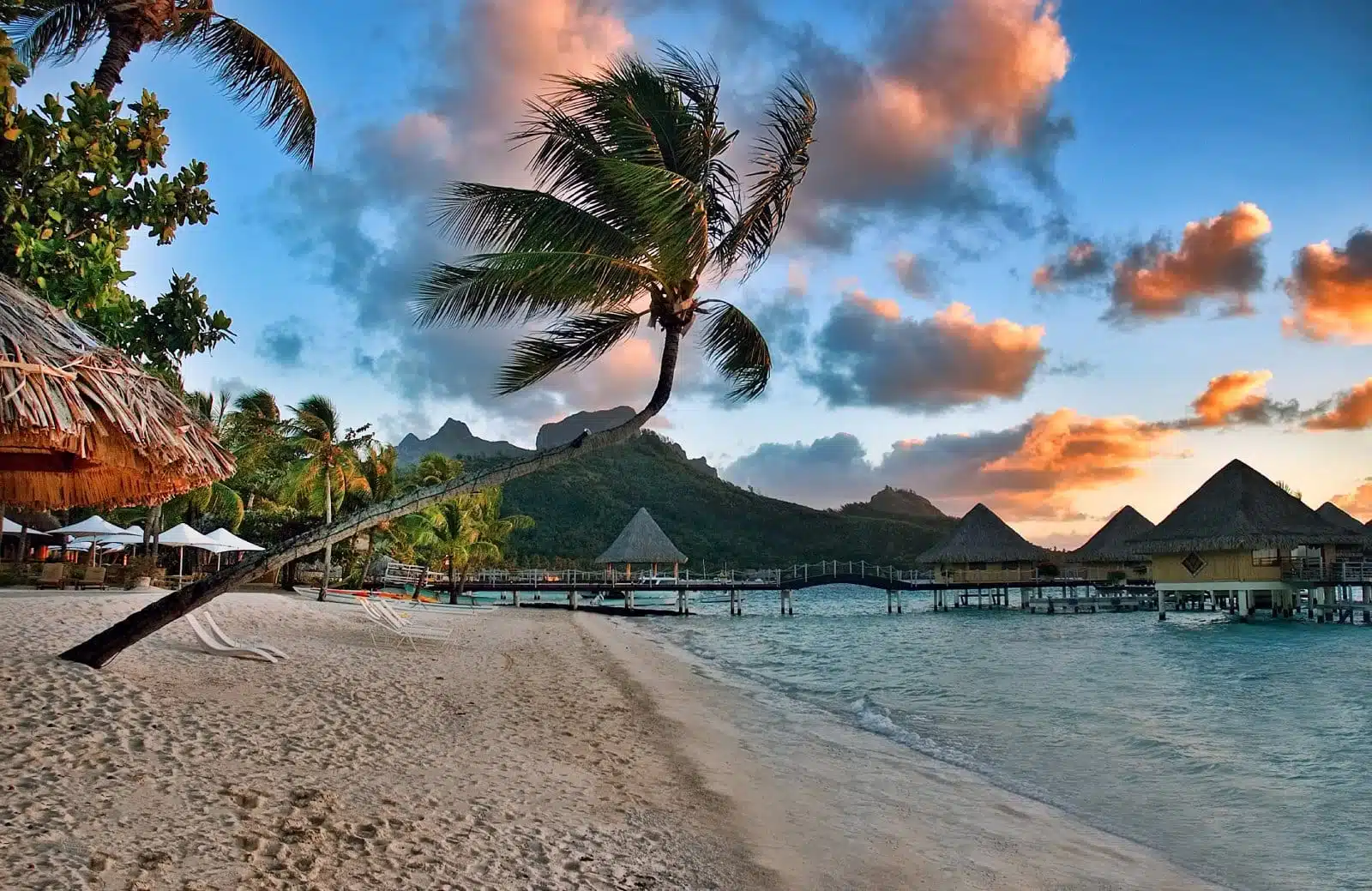
Image Credit: Shutterstock / Lux Blue
French Polynesia, a collection of over 100 islands in the South Pacific Ocean, spans an area larger than Europe. Its history is rich and weaves together the stories of its indigenous peoples, European explorers, and the eventual establishment of French colonial rule. This history is marked by significant events, cultural evolution, and the impact of external influences on its traditional way of life.
The islands of French Polynesia were first settled by Polynesians, skilled navigators, and sailors from Southeast Asia around 1000 BCE. These early settlers brought their culture, language, and traditions, establishing complex societies based on fishing, agriculture, and social hierarchy. The Marquesas Islands were among the first to be settled, followed by the Society Islands, where the island of Tahiti became a prominent center of culture and power.
European contact began in the 16th century with the arrival of Spanish explorers. However, it was the British explorer James Cook who, in the 18th century, put Tahiti and its neighboring islands on the map for Europe. Cook’s visits and those of other European explorers marked the beginning of significant changes for the islands. The Europeans brought with them diseases to which the local population had no immunity, causing devastating epidemics.
The 19th century saw the arrival of Christian missionaries, primarily from the London Missionary Society, who sought to convert the local population to Christianity. Significant cultural and social changes marked this period, as the missionaries discouraged many traditional practices and introduced new social norms. The conversion to Christianity profoundly impacted Polynesian society, leading to the decline of the traditional social structure and the adoption of new laws and customs.
French interest in the region grew throughout the 19th century, culminating in the establishment of the French protectorate over Tahiti in 1842. Over the following decades, France extended its control to include other island groups, such as the Marquesas and the Tuamotus, eventually consolidating its territories into what is now known as French Polynesia. The colonization process involved negotiations, treaties, and sometimes conflict with the local population.
The 20th century was a period of significant change for French Polynesia, marked by economic development, the impact of World War II, and the establishment of a French nuclear testing site on the atoll of Moruroa in 1966. The nuclear testing program, which lasted until 1996, had significant environmental and health impacts on the region and became a source of controversy and protest.
In recent decades, French Polynesia has moved towards greater autonomy within the French Republic. The islands have been granted a status of overseas collectivity, allowing for self-governance in many areas while remaining part of France. French Polynesia’s economy is based on tourism, pearl farming, and agriculture, with a growing awareness and appreciation of its rich cultural heritage and natural beauty.
The People of French Polynesia

Image Credit: Shutterstock / sarayuth3390
The people of French Polynesia, known as Polynesians, are part of the broader Austronesian family, which is spread across the Pacific Ocean. The population of French Polynesia is diverse, comprising indigenous Polynesians and people of European, Chinese, and mixed heritage. This diversity reflects the islands’ complex history of exploration, colonization, and immigration. As of the early 21st century, the population is approximately 280,000, with the majority residing on the island of Tahiti, particularly in and around Papeete, the capital city.
The indigenous Polynesians are the descendants of the original settlers who navigated the vast Pacific Ocean and settled the islands thousands of years ago. These early settlers developed a rich cultural heritage that included language, art, religion, and social organization. Polynesian culture is characterized by strong communal ties, respect for the environment, and a deep connection to ancestral traditions. The Maohi, the indigenous people of French Polynesia, maintain a strong cultural identity through dance, music, tattooing, and other traditional practices.
European influence in French Polynesia began in the 16th century, but it was in the 19th century that France established a colonial presence. Europeans, primarily French, have since become integral to the population. They have contributed to the islands’ administrative, educational, and economic systems. While some Europeans are recent arrivals, many are descendants of early settlers and missionaries and are fully integrated into Polynesian society.
The Chinese community in French Polynesia traces its roots back to the 19th century when the first immigrants arrived to work in cotton and coffee plantations. Over time, the Chinese community diversified into commerce and other sectors of the economy. Today, they play a significant role in the business sector, particularly retail and hospitality. The Chinese community has also contributed to the cultural history of the islands, introducing their traditions, cuisine, and festivals.
French Polynesia’s demographic profile is youthful, with a significant portion of the population under the age of 30. This demographic structure presents opportunities and challenges in terms of education, employment, and social services.
French and Tahitian are the official languages, with French being used in government, education, and media, while Tahitian and other Polynesian languages are spoken in daily life and maintained as a vital part of cultural identity. English is also widely spoken, especially in the tourism sector.
Polynesian society is traditionally organized around extended families and clans, with a strong emphasis on community and mutual support. This social structure is reflected in the land tenure system, communal fishing and agricultural practices, and organizing festivals and social events.
The people of French Polynesia face several challenges, including economic dependency on tourism, environmental threats due to climate change, and the preservation of their cultural heritage in a rapidly globalizing world. However, there are also opportunities, particularly in developing sustainable tourism, marine resources, and cultural industries.
1. Bora Bora
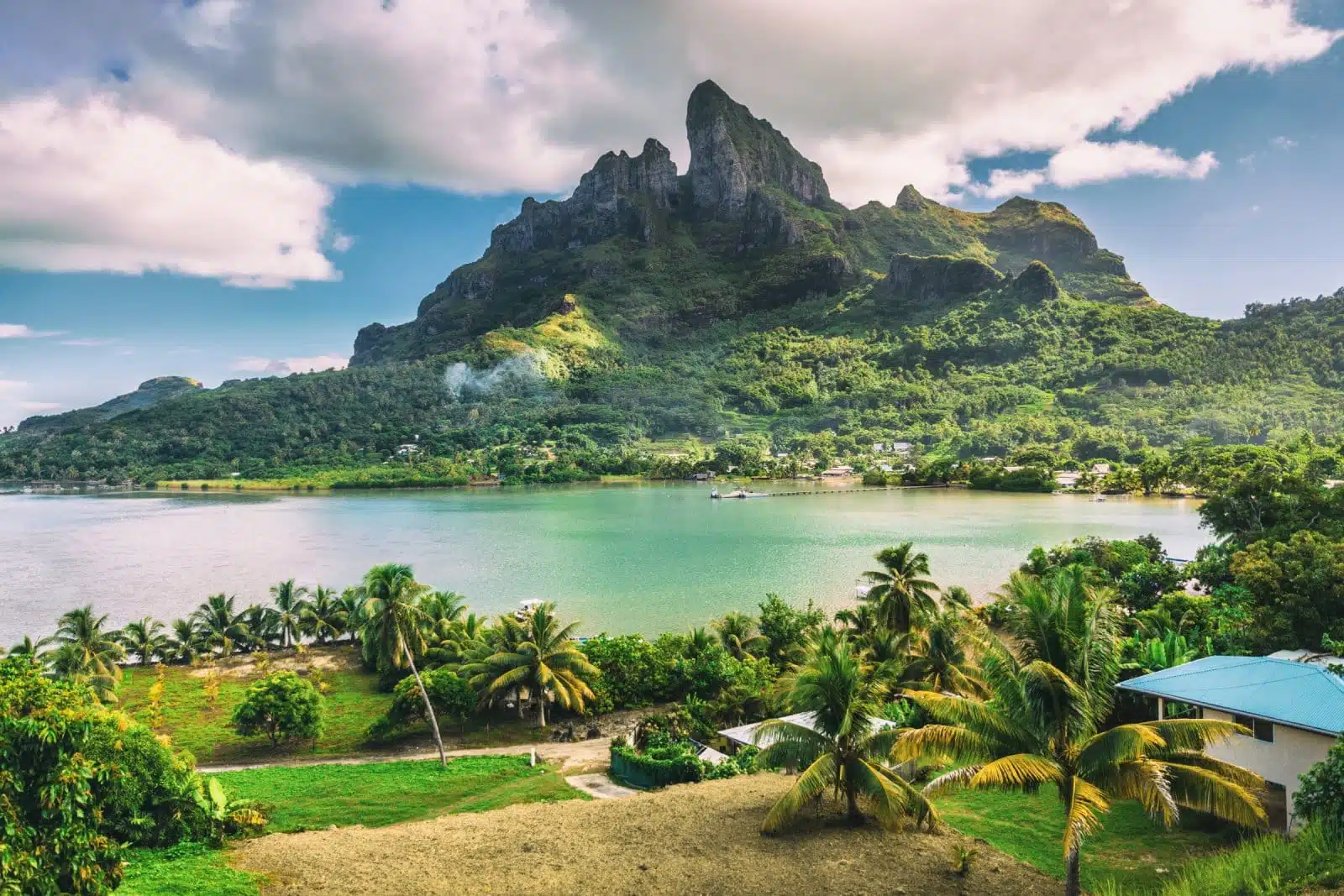
Image Credit: Shutterstock / Maridav
Bora Bora, often called the jewel of the South Seas, epitomizes paradise with its turquoise lagoons, soft white sands, and lush volcanic peaks. At its heart lies the mesmerizing Mount Otemanu, a dormant volcano that rises sharply from the island’s center. The surrounding lagoon is a haven for snorkeling and scuba diving, offering up-close encounters with a vibrant array of marine life, including rays, sharks, and a kaleidoscope of tropical fish. The island’s luxury resorts are world-renowned, offering overwater bungalows directly accessing the crystal-clear waters below. Bora Bora is a place of stunning beauty and a location where visitors can immerse themselves in Polynesian culture through traditional dance performances, crafts, and cuisine.
Insider’s Tip: For a truly unique experience, visit the Bora Bora Lagoonarium. This natural aquarium offers guided snorkeling tours where you can swim alongside sea turtles, sharks, and rays in a safe and controlled environment.
When to Travel: The best time to visit Bora Bora is during the dry season, from May to October, when the weather is cooler and less humid, making outdoor activities more enjoyable.
How to Get There: Bora Bora is accessible by air from Tahiti’s Faa’a International Airport. A short, scenic flight brings you to Bora Bora Airport on the islet of Motu Mete, where boat transfers take you to the main island or your resort.
2. Moorea
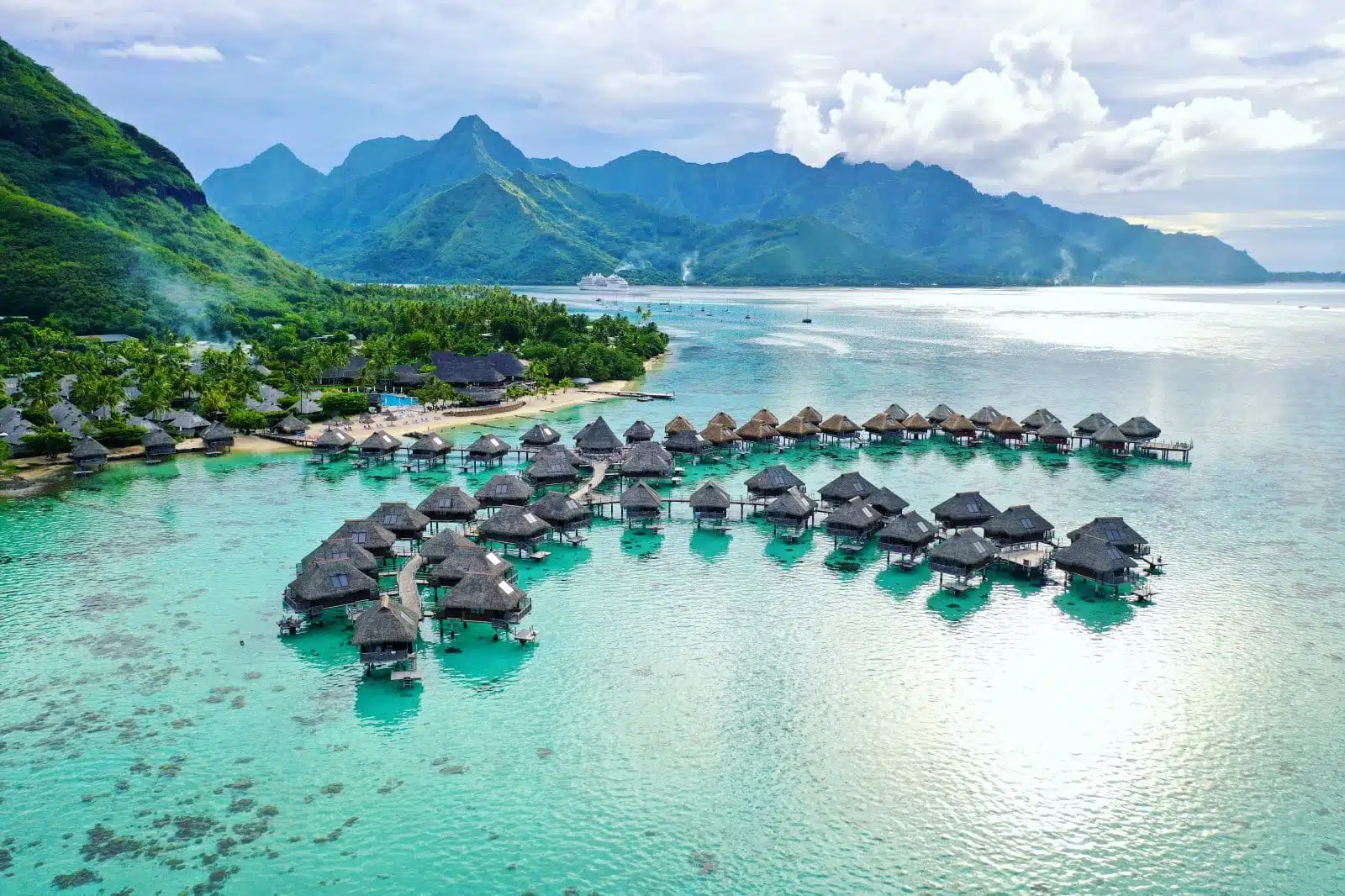
Image Credit: Shutterstock / Jon Ruiz Ortiz
Moorea, with its heart-shaped outline, is a haven of peace and natural beauty just a short ferry ride from Tahiti. The island’s dramatic landscapes, from jagged mountain peaks to tranquil blue bays highligh its volcanic origins. Moorea is an adventurer’s paradise, offering hiking, quad biking, and 4×4 tours that provide panoramic views of the island’s stunning scenery. The Belvedere Lookout, in particular, offers breathtaking views of Cook’s Bay and Opunohu Bay, framed by the island’s lush mountains. Moorea also boasts a rich cultural heritage, with ancient marae (sacred Polynesian temples) and contemporary art galleries showcasing the island’s history and creativity.
Insider’s Tip: For an unforgettable experience, take a guided tour of the Moorea Tropical Garden. This family-run garden offers insight into the cultivation of vanilla and provides tastings of local products made from fruits and flowers grown on the island.
When to Travel: The ideal time to visit Moorea is during the dry season, from May to October, when the weather is favorable for exploring the island’s natural and cultural attractions.
How to Get There: Moorea is easily accessible from Tahiti by ferry, with frequent services departing from Papeete. The journey offers stunning views of Tahiti and Moorea and takes approximately 30 minutes.
3. The Marquesas Islands
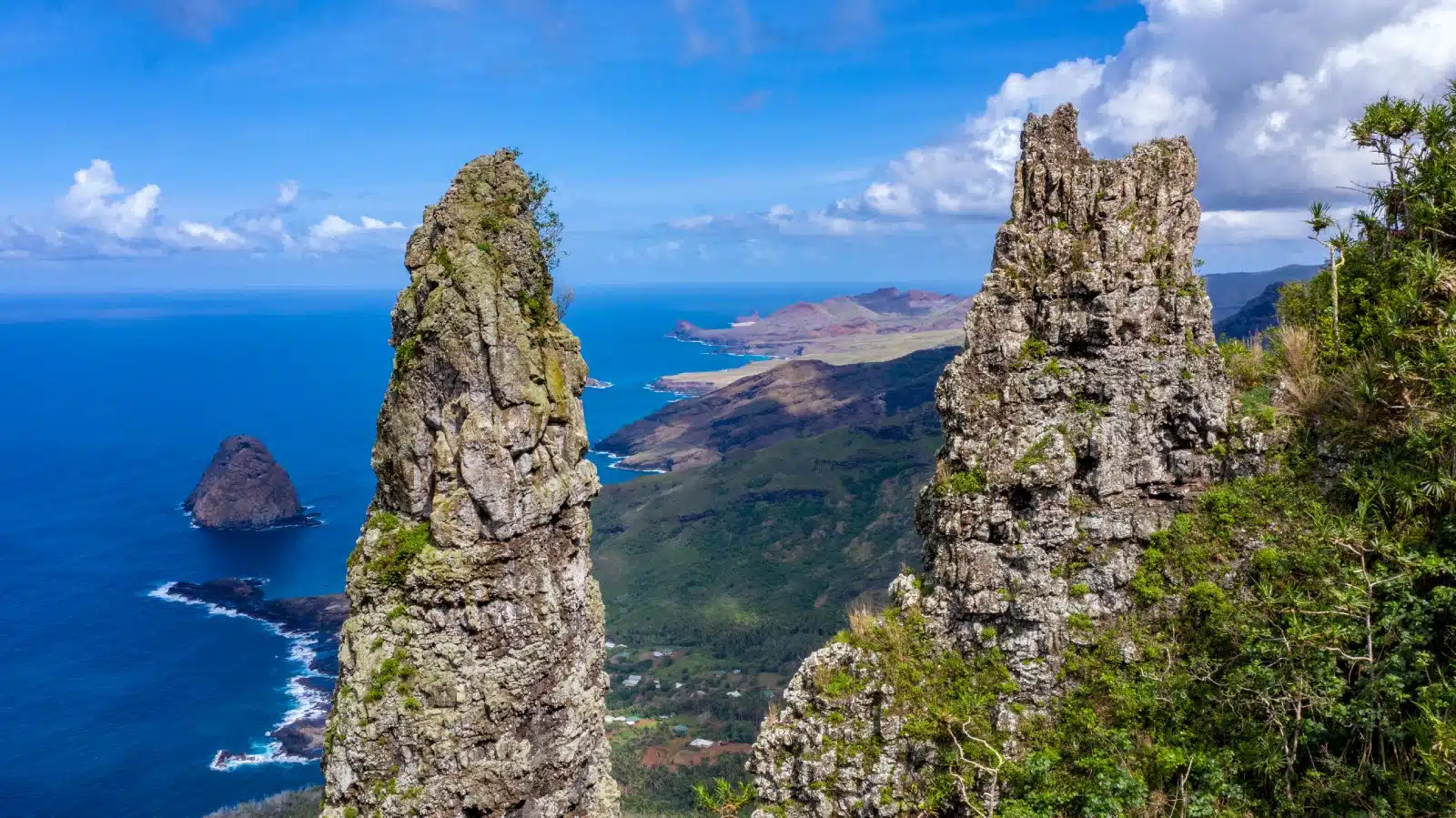
Image Credit: Shutterstock / THOMAS ATHENOL
The Marquesas Islands, remote and rugged, represent one of the most culturally intact regions of French Polynesia. Far from the tourist trails, these islands offer a glimpse into a way of life that has remained largely unchanged for centuries. The Marquesas are known for their towering cliffs, ancient petroglyphs, and lush valleys where wild horses roam. The islands have a rich artistic heritage, with local artisans excelling in wood carving, tattooing, and sculpture. The Marquesas also have a profound connection to famous artists and writers, including Paul Gauguin and Herman Melville, who were inspired by the island’s raw beauty and vibrant culture.
Insider’s Tip: Attend a traditional Marquesan pig roast, or ‘umu, to experience the islands’ culinary traditions firsthand. This communal feast, where food is slow-cooked in an earth oven, offers a taste of authentic Marquesan cuisine and hospitality.
When to Travel: The best time to visit the Marquesas Islands is during the dry season, from July to September, when the climate is cooler and the seas are calmer, facilitating travel between islands.
How to Get There: The Marquesas Islands are accessible by air from Tahiti, with direct flights to Nuku Hiva and Hiva Oa. The journey is an adventure, offering spectacular aerial views of the Pacific Ocean and the archipelago.
4. Tahiti

Image Credit: Shutterstock / Maridav
Tahiti, the largest island in French Polynesia, serves as the vibrant heart of the region, blending natural beauty with cultural richness. Papeete, the capital city, buzzes with energy, offering a mix of traditional markets, sophisticated dining, and lively nightlife. Beyond the city, Tahiti boasts black sand beaches, waterfalls, and verdant valleys waiting to be explored. The island’s interior is dominated by towering peaks and deep valleys filled with ancient archaeological sites and lush rainforests. Surfing is a popular activity on Tahiti’s black sand beaches, with spots like Teahupo’o drawing surfers from around the globe. Tahiti also serves as a gateway to the rest of French Polynesia, making it a perfect starting point for island-hopping adventures.
Insider’s Tip: Explore the Arahoho Blowhole on Tahiti’s north coast. This natural wonder, created by volcanic rock formations, shoots sea water into the air, creating a spectacular display, especially on windy days.
When to Travel: The optimal time to visit Tahiti is between May and October, during the dry season, when the weather is cooler and less humid, ideal for outdoor adventures and exploring the island.
How to Get There: Tahiti is accessible via Faa’a International Airport, located just outside Papeete. It serves as the primary entry point for international flights to French Polynesia, with direct connections to many international destinations.
5. Rangiroa
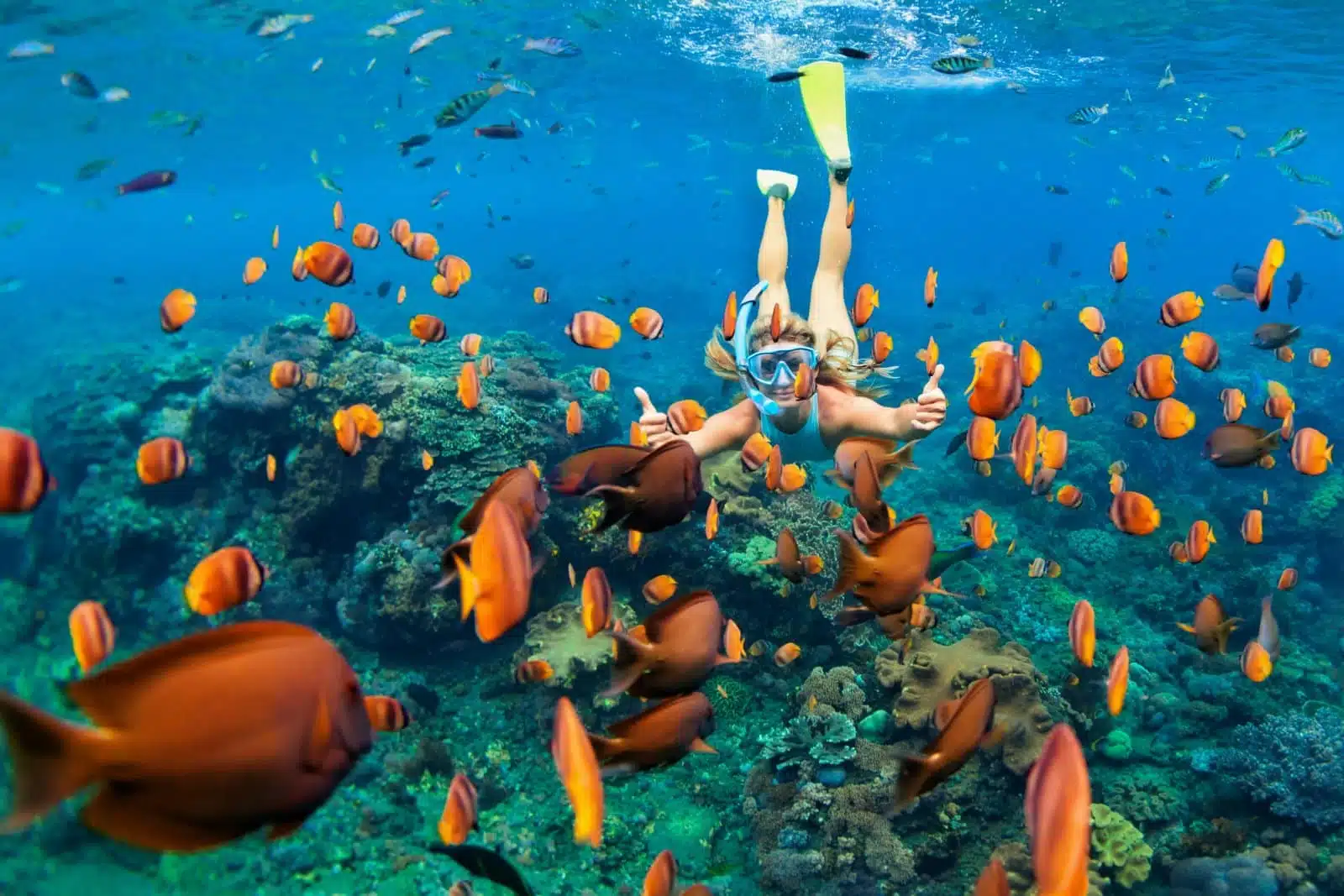
Image Credit: Shutterstock / Denis Moskvinov
Rangiroa, one of the largest atolls in the world, is a haven for divers and snorkelers, known for its vast, tranquil lagoon and abundant marine life. The atoll’s clear blue waters are home to dolphins, rays, and countless fish species, making it a world-class destination for underwater exploration. Rangiroa is also famous for its vineyards, among the few in the world to be located on a coral atoll, producing unique wines that are a must-try for visitors. The relaxed pace of life and the breathtaking beauty of the endless horizon make Rangiroa a perfect escape for those looking to experience the serene side of French Polynesia.
Insider’s Tip: Don’t miss the opportunity to dive or snorkel in the Tiputa Pass, where you can experience the incredible drift dive through a channel that connects the open ocean to Rangiroa’s lagoon, offering a chance to see large pelagic fish, dolphins, and even sharks.
When to Travel: The best time to visit Rangiroa is from May to October, when the weather is drier and the visibility underwater is at its best, making it ideal for diving and snorkeling.
How to Get There: Rangiroa is accessible by air from Tahiti, with daily flights to the atoll’s small airport. The flight offers stunning views of the Pacific Ocean and the atoll’s vast lagoon.
6. Huahine
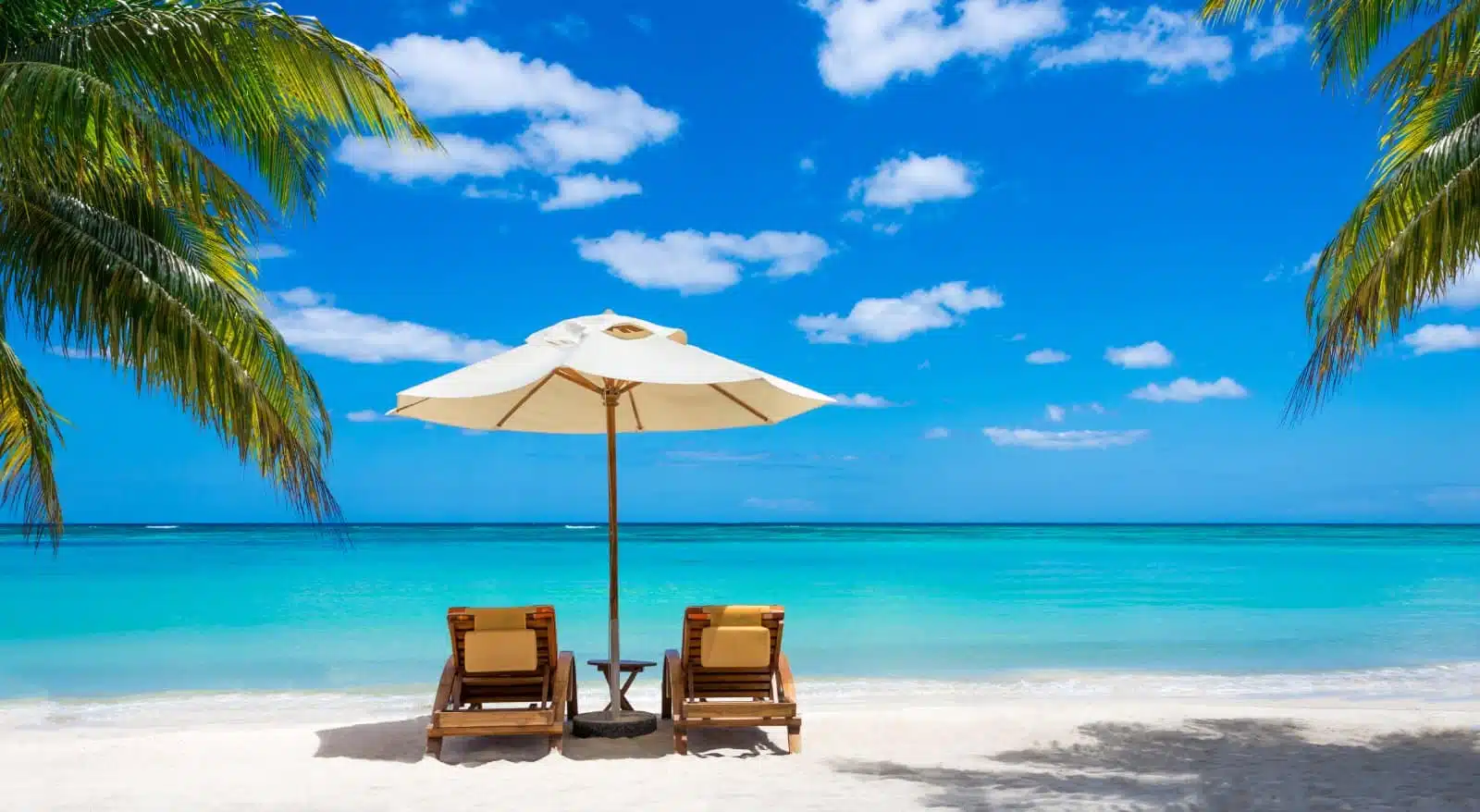
Image Credit: Shutterstock / BMProductions
Huahine, often called the Garden of Eden, is a lush, relatively untouched island known for its deep bays, white sandy beaches, and archaeological sites. The island comprises two main islands, Huahine Nui and Huahine Iti, connected by a short bridge. Huahine maintains a strong sense of traditional Polynesian culture, with fewer tourists than its more famous neighbors. The island’s fertile soil supports a rich array of flora, and its waters are teeming with life, making it a fantastic destination for those interested in land and sea adventures. Huahine’s archaeological sites, including ancient marae and stone fish traps, offer a glimpse into the island’s past and the sophisticated society that once thrived there.
Insider’s Tip: Visit the Maeva village, where you can explore some of the best-preserved marae in Polynesia, set against the backdrop of Lake Fauna Nui. This area offers a profound insight into the island’s ancient culture and traditions.
When to Travel: The ideal time to visit Huahine is during the dry season, from May to October, when the weather is favorable for exploring the island’s natural and cultural attractions.
How to Get There: Huahine is accessible by air from Tahiti, with regular flights to Huahine Airport. The flight is short, offering picturesque views of the Society Islands along the way.
7. Taha’a
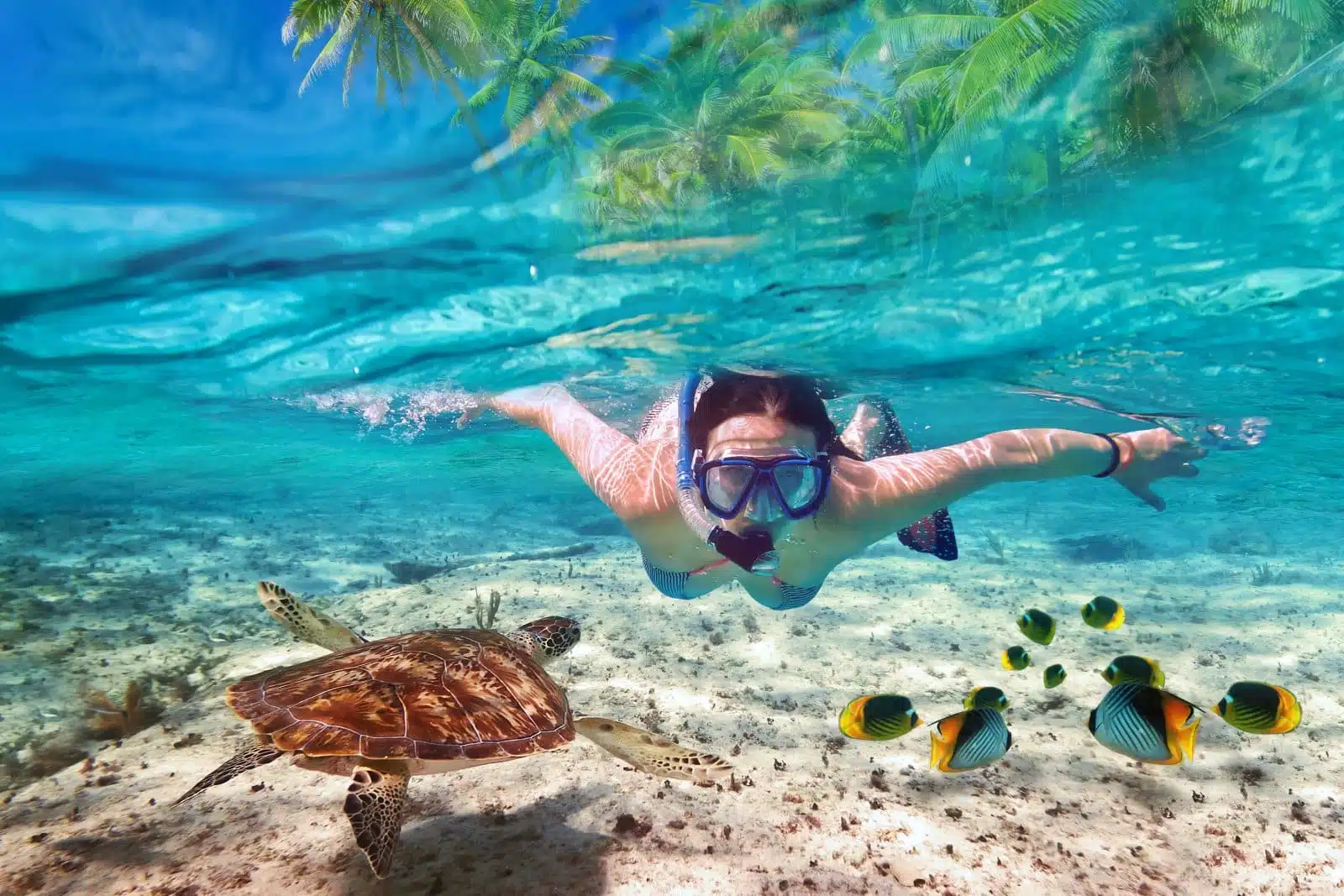
Image Credit: Shutterstock / Patryk Kosmider
Taha’a, often paired with its more famous sister island, Raiatea, shares the same lagoon but offers a distinctly different experience. Known as the Vanilla Island, Taha’a produces some of the world’s best vanilla, and its sweet aroma fills the air. The island’s slow pace of life, beautiful beaches, and excellent snorkeling spots make it a hidden gem in French Polynesia. Taha’a’s coral gardens are a highlight, offering snorkelers the chance to glide over vibrant coral teeming with marine life. The island also boasts pearl farms, where visitors can learn about the cultivation of black pearls, one of French Polynesia’s most famous exports.
Insider’s Tip: Take a guided tour of a vanilla plantation to learn about the intricate process of growing and curing vanilla. Many tours offer the chance to purchase freshly harvested vanilla beans directly from the growers.
When to Travel: Visiting Taha’a between May and October is recommended, as the weather is drier and cooler, making it more comfortable to explore the island and enjoy its outdoor activities.
How to Get There: Taha’a is accessible by boat from Raiatea, as the two islands share the same lagoon. There are also direct flights to Raiatea from Tahiti, followed by a short boat transfer to Taha’a.
8. Fakarava
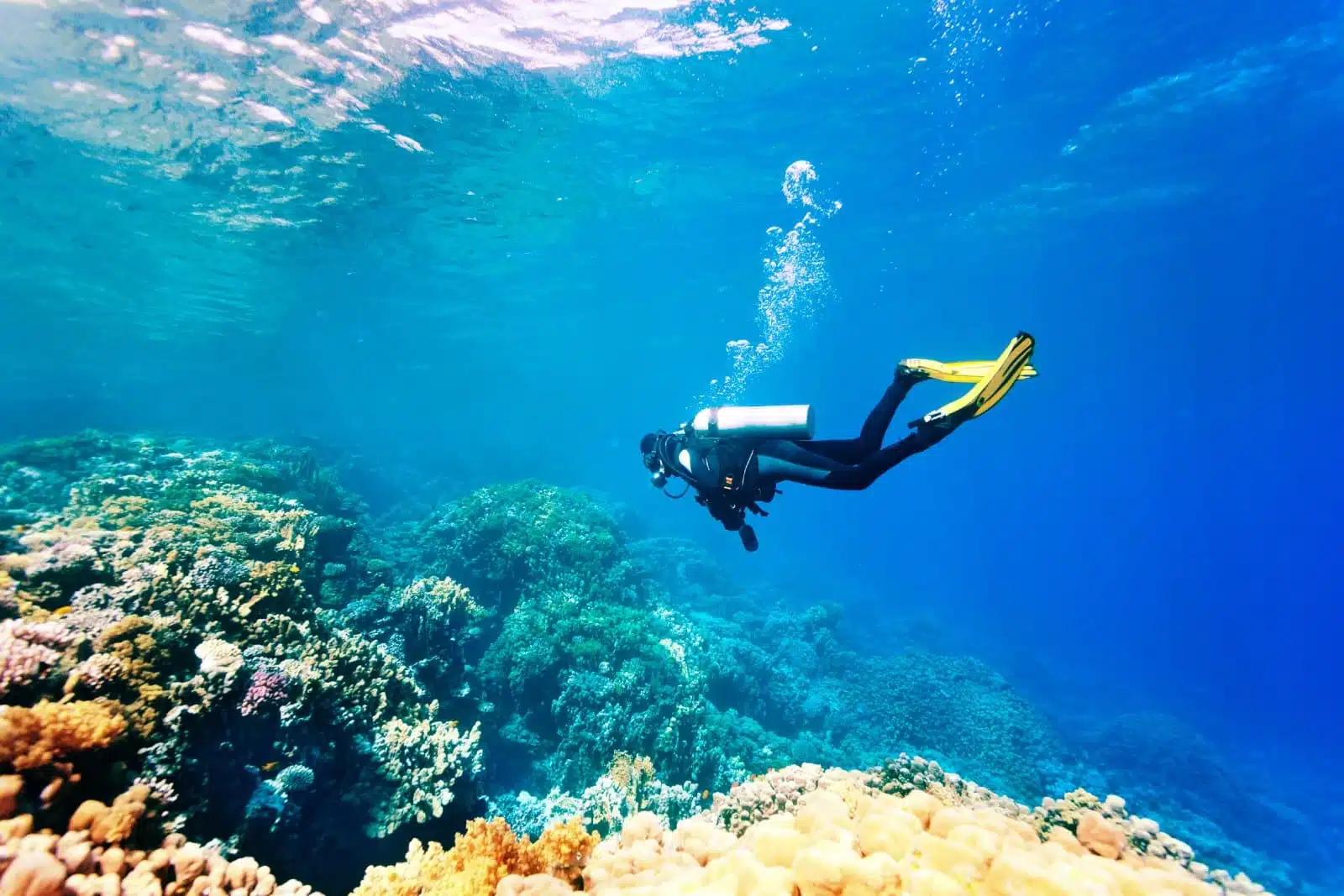
Image Credit: Shutterstock / Sergiy Zavgorodny
Fakarava, a UNESCO Biosphere Reserve, is an atoll known for its pristine environment and exceptional diving spots. The atoll’s ecosystem supports a diverse range of marine life, including rare sharks, fish, and coral species. Fakarava’s main attractions are its two passes, Garuae and Tumakohua, which are gateways for the abundant sea life that flows into the lagoon. Divers and snorkelers are drawn to these waters to witness the spectacular underwater scenery and the dense populations of marine creatures. The atoll is also home to quaint villages where traditional Polynesian life continues amidst stunning natural beauty. Fakarava’s commitment to preserving its natural environment makes it an ideal destination for eco-conscious travelers.
Insider’s Tip: Plan your visit around the annual group spawning of groupers around the full moon in June or July. This natural event attracts large numbers of sharks and other predators, offering a unique and thrilling diving experience.
When to Travel: The dry season from May to October is the best time to visit Fakarava for diving and snorkeling, thanks to the clearer waters and milder weather.
How to Get There: Fakarava is accessible by air from Tahiti, with flights landing at Fakarava Airport. The journey offers breathtaking views of the atoll’s expansive lagoon and the surrounding Pacific Ocean.
9. Tetiaroa
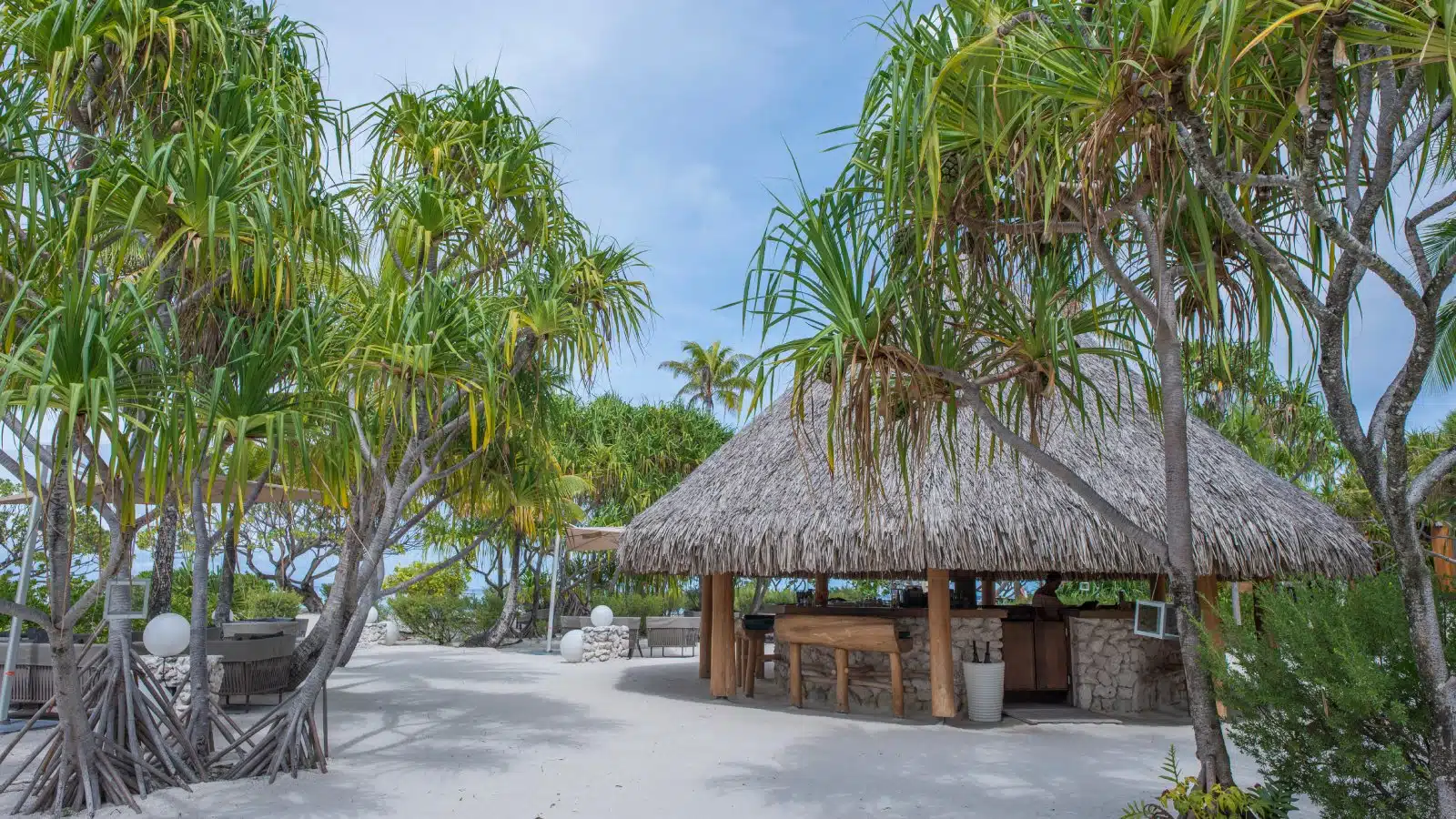
Image Credit: Shutterstock / aitahiti
Tetiaroa, once a retreat for Tahitian royalty and later for Hollywood royalty, such as Marlon Brando, is now an exclusive resort island that continues to captivate visitors with its untouched beauty and luxury. The atoll is comprised of a dozen small islets surrounding a sparkling lagoon. Tetiaroa is a sanctuary for birds, sea turtles, and other marine life, making it a fantastic destination for nature lovers. The island offers unparalleled tranquility and privacy and sustainable luxury accommodations that blend seamlessly with the natural environment. Activities on Tetiaroa focus on conservation and include bird watching, snorkeling in the pristine lagoon, and visiting the island’s eco-station.
Insider’s Tip: Take advantage of the guided tours offered by the resort’s naturalists. These tours provide insights into the atoll’s unique ecosystem and the conservation efforts in place to protect it.
When to Travel: Tetiaroa is a year-round destination, but the most comfortable weather conditions are found from May to October, during the dry season.
How to Get There: Access to Tetiaroa is exclusively through private charter flights from Tahiti, arranged by The Brando resort. The short flight offers stunning aerial views of the atoll and the surrounding ocean.
10. Maupiti
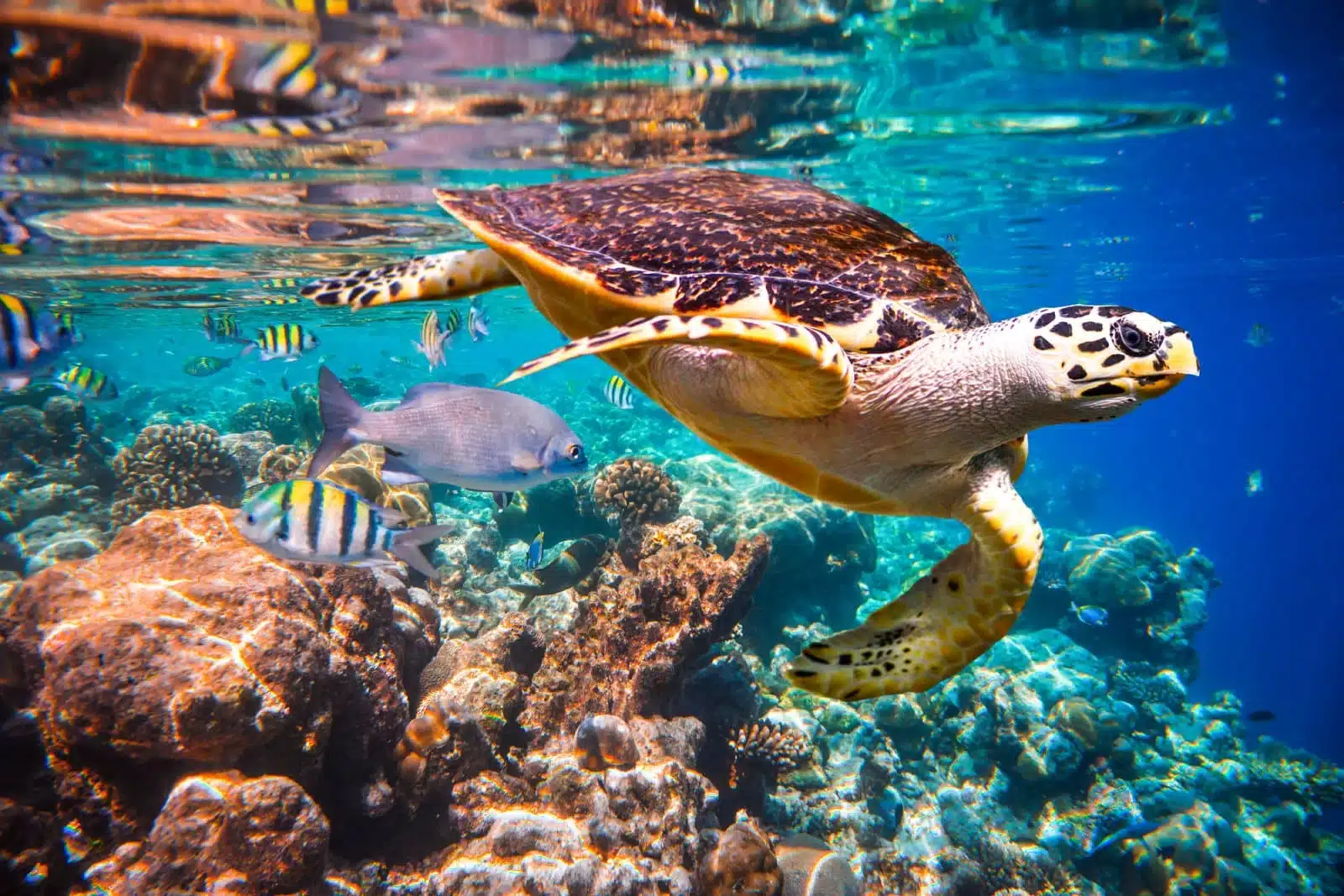
Image Credit: Shutterstock / Andrei Armiagov
Maupiti, often referred to as a smaller, quieter version of Bora Bora, is a hidden gem with a laid-back atmosphere and stunning natural beauty. The island is encircled by a coral reef, creating a serene lagoon perfect for snorkeling and swimming. Maupiti’s main island is dotted with archaeological sites, including ancient marae and petroglyphs, offering a glimpse into Polynesia’s rich history. The island’s small size and limited tourism development make it an ideal destination for those seeking a more authentic Polynesian experience. Visitors can explore the island by bicycle, climb Mount Teurafaatiu for panoramic views, or simply relax on its pristine beaches.
Insider’s Tip: Visit Maupiti’s Tereia Beach, a beautiful stretch of white sand that extends into the lagoon, creating a shallow, crystal-clear pool ideal for swimming and relaxation.
When to Travel: The best time to visit Maupiti is during the dry season, from May to October, when the weather is more favorable for outdoor activities and exploring the island.
How to Get There: Maupiti is accessible by air from Tahiti, with flights landing at Maupiti Airport. The island can also be reached by boat from Bora Bora, although services are less frequent and depend on weather conditions.
11. Raiatea and Taha’a
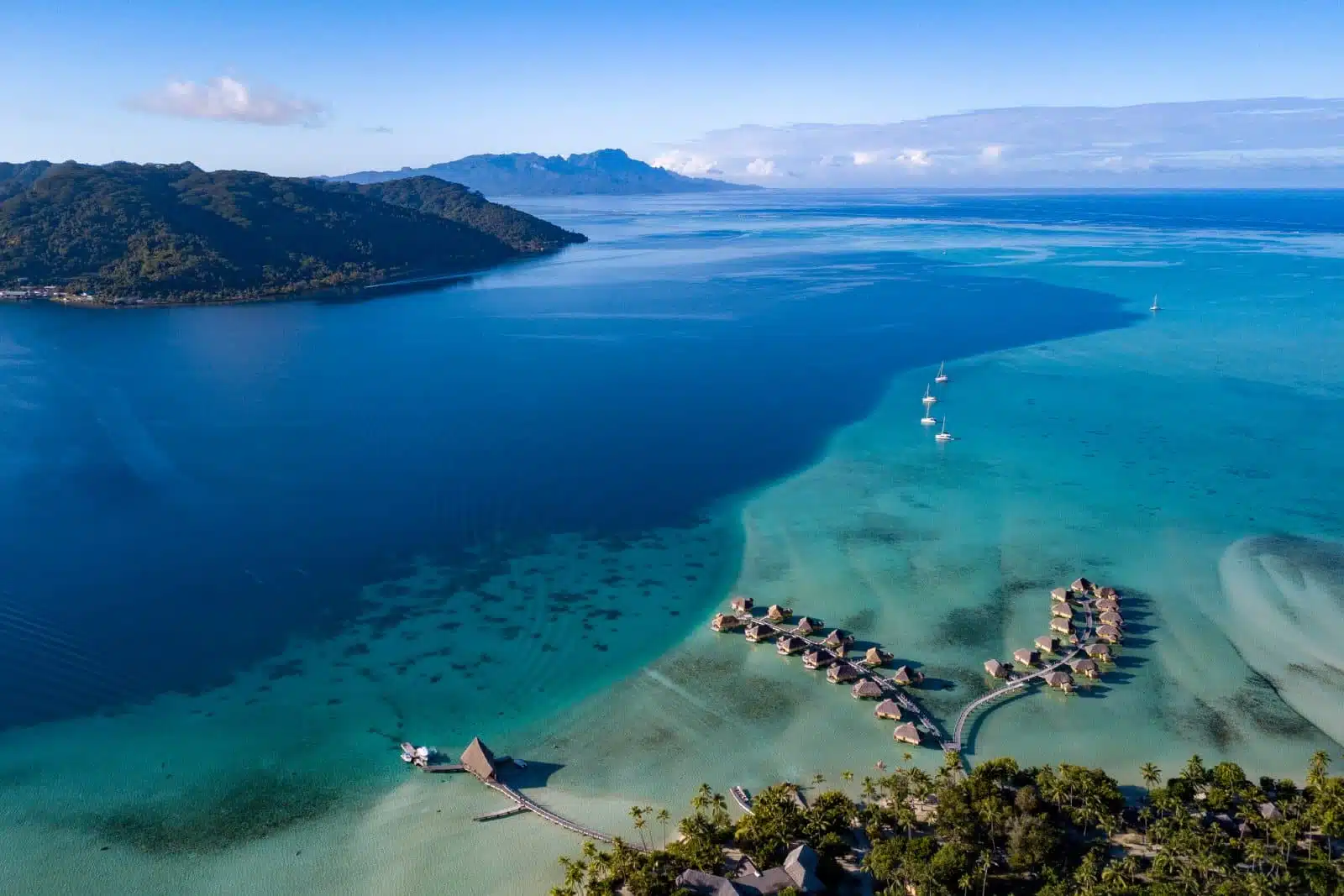
Image Credit: Shutterstock / Andrea Izzotti
Raiatea, known as the “Sacred Island,” is rich in cultural and historical significance, believed to be the original birthplace of Polynesia. The island is home to Taputapuatea, a UNESCO World Heritage Site and one of Polynesia’s most important cultural, religious, and historical landmarks. Raiatea offers lush landscapes, waterfalls, and rivers that invite exploration. It’s also a hub for sailing and yachting in French Polynesia, thanks to its large, protected lagoon and marinas. Taha’a, as previously mentioned, shares the same lagoon with Raiatea and is known for its vanilla production and beautiful coral gardens.
Insider’s Tip: To explore Polynesian culture and history, visit the Taputapuatea marae on Raiatea. Guided tours can provide valuable insights into the significance of this sacred site.
When to Travel: The ideal time to visit Raiatea and Taha’a is from May to October, during the dry season, when the weather is conducive to exploring the islands and engaging in water-based activities.
How to Get There: Raiatea is accessible by air from Tahiti, with regular flights to Raiatea Airport. From Raiatea, Taha’a is just a short boat ride away, making it easy to explore both islands during your visit.
12. Nuku Hiva

Image Credit: Shutterstock / CatwalkPhotos
Nuku Hiva, the largest of the Marquesas Islands, offers a dramatic landscape of towering cliffs, deep bays, and cascading waterfalls. This island is a haven for those seeking adventure and a deep connection with nature. Nuku Hiva’s rich history and culture are evident in its ancient archaeological sites, including megalithic tikis and sacred marae. The island’s rugged terrain provides the perfect backdrop for hiking, horseback riding, and 4×4 adventures, leading visitors to remote villages, hidden beaches, and breathtaking viewpoints. Nuku Hiva is also renowned for its arts and crafts, particularly wood carving and tattooing, which are integral parts of Marquesan culture.
Insider’s Tip
Embark on a guided hike to the Vaipo Waterfall, one of the tallest waterfalls in the world, which cascades down into a secluded valley. The journey offers a glimpse into the island’s stunning natural beauty and the opportunity to swim in the waterfall’s basin.
When to Travel
The best time to visit Nuku Hiva is during the Marquesan summer, from September to December when the island is less crowded and the weather is warm and dry, ideal for exploring its natural and cultural sites.
How to Get There
Nuku Hiva is accessible by air from Tahiti, with flights landing at Nuku Hiva Airport. The flight offers stunning views of the Marquesas Islands, setting the stage for an unforgettable visit.
13. Mangareva
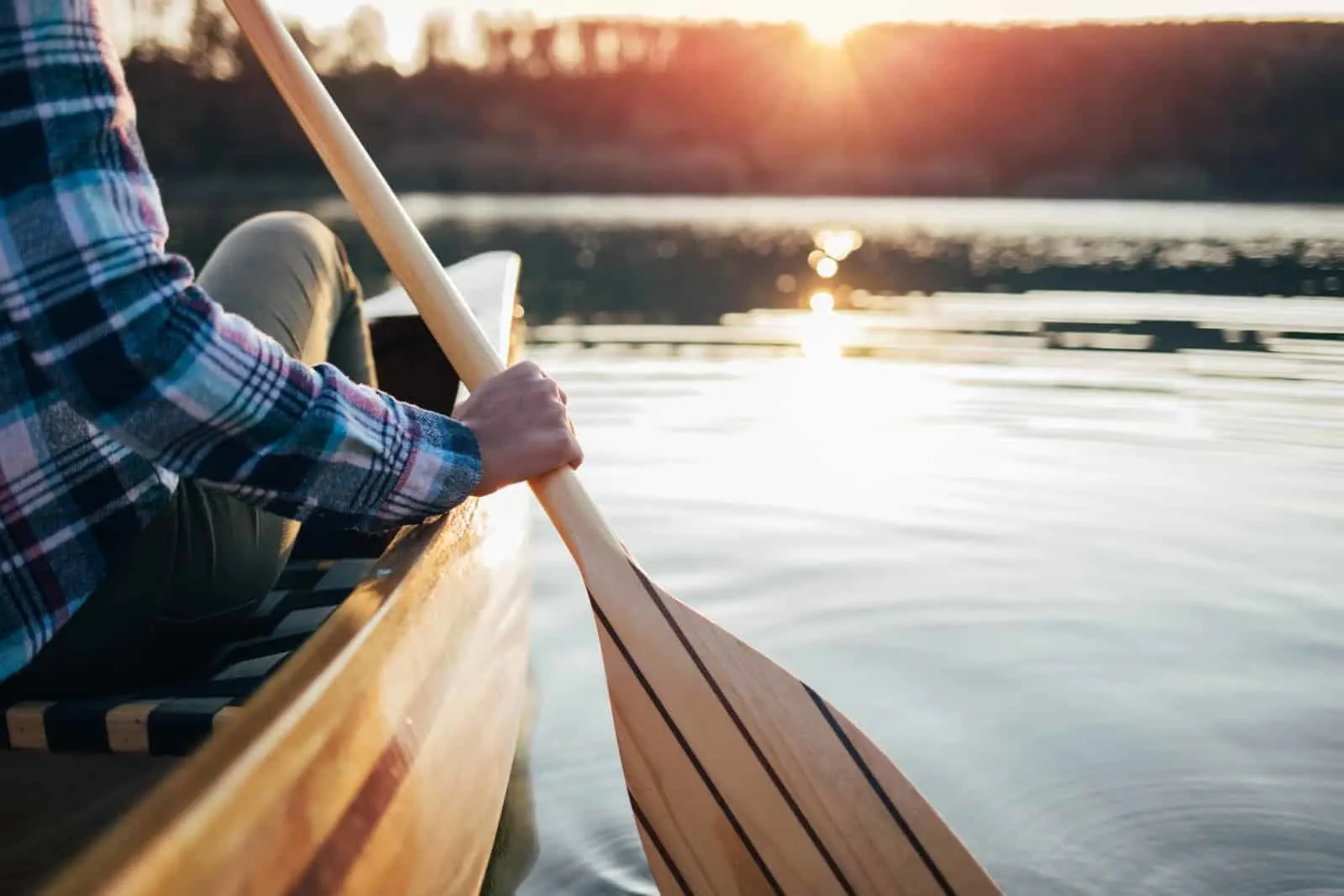
Image Credit: Shutterstock / Popartic
Mangareva, the largest island in the Gambier Archipelago, is a remote paradise known for its rich history, pearl farming, and stunning natural beauty. The island is surrounded by a coral reef, creating a protected lagoon perfect for snorkeling and kayaking. Mangareva’s landscape is dotted with the remnants of a once-thriving 19th-century Catholic mission, including churches, convents, and watchtowers, which offer a unique glimpse into the island’s past. The island’s pearl farms produce some of the finest black pearls in French Polynesia, and visitors can learn about the pearl farming process and even purchase pearls directly from the farmers.
Insider’s Tip: Visit the Cathedral of St. Michael in Rikitea, a remarkable structure built with coral and adorned with mother-of-pearl inlays. The cathedral is a testament to Mangareva’s unique blend of Polynesian and European influences.
When to Travel: The optimal time to visit Mangareva is during the dry season, from May to October when the weather is more favorable for outdoor activities and exploring the island’s historical sites and natural beauty.
How to Get There: Mangareva is accessible by air from Tahiti, with flights landing at Gambier Airport. The journey offers a unique opportunity to disconnect and immerse yourself in the tranquility of one of French Polynesia’s most secluded destinations.
14. The Austral Islands
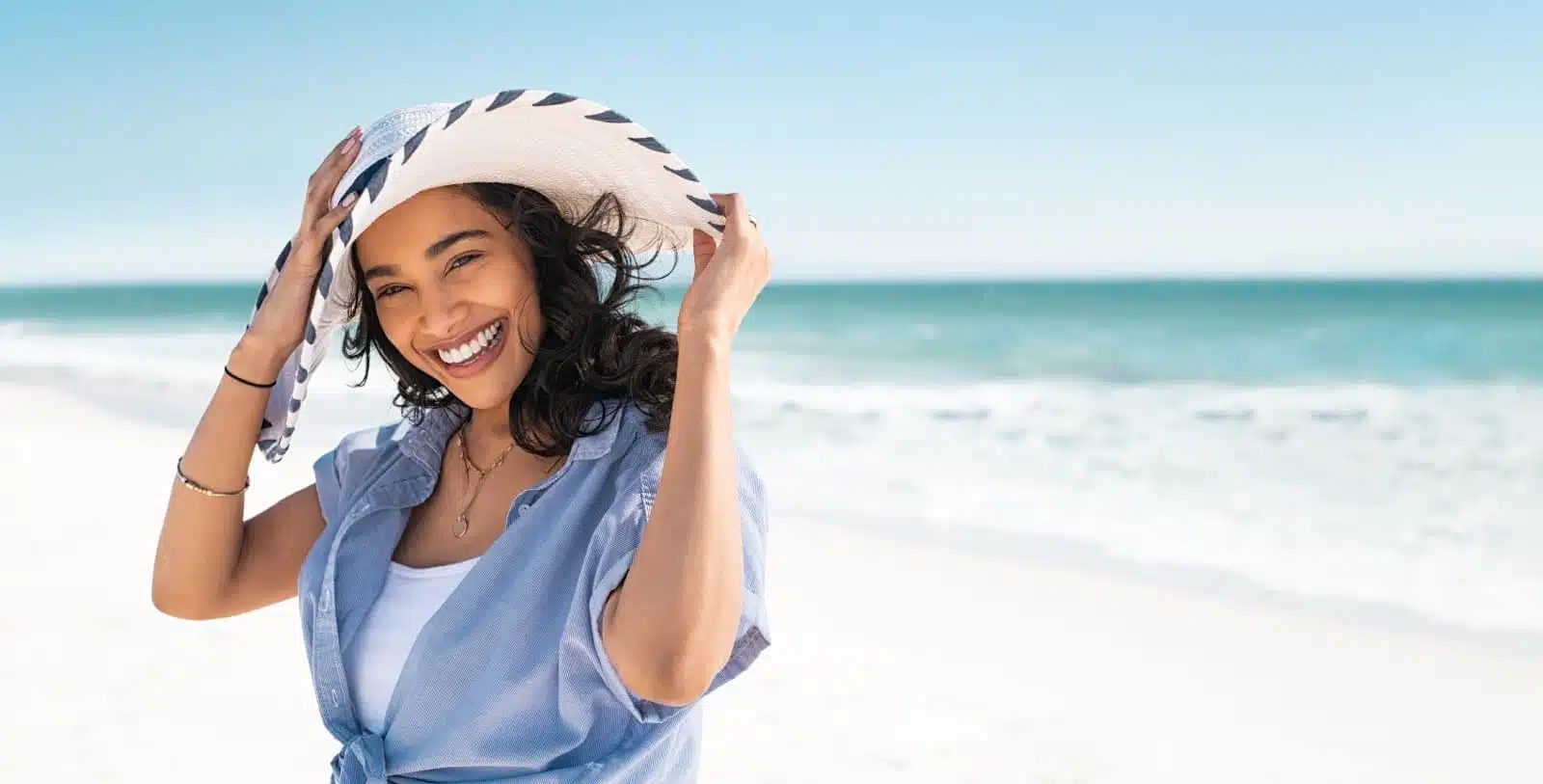
Image Credit: Shutterstock / Ground Picture
The Austral Islands, located in the southernmost part of French Polynesia, are known for their cooler climate, rich Polynesian culture, and breathtaking landscapes. The islands have rugged terrain, with high cliffs, rolling hills, and lush vegetation. The Australs are less visited than other parts of French Polynesia, offering a more authentic and intimate experience of Polynesian life. The islands are renowned for their traditional crafts, including basket weaving, hat making, and wood carving. The Austral Islands also offer excellent opportunities for whale watching, as humpback whales migrate to these waters between July and October.
Insider’s Tip: Participate in a traditional weaving workshop to learn about the art of making baskets, hats, and other items from local materials. This hands-on experience provides insight into the islands’ cultural heritage and supports local artisans.
When to Travel: The best time to visit the Austral Islands is during the whale watching season, from July to October, when the weather is cooler and the seas are calm, making it ideal for spotting humpback whales.
How to Get There: The Austral Islands are accessible by air from Tahiti, with flights to several of the islands, including Tubuai and Rurutu. The journey offers a unique perspective on the remote beauty and cultural richness of this less-traveled region of French Polynesia.
The Bottom Line
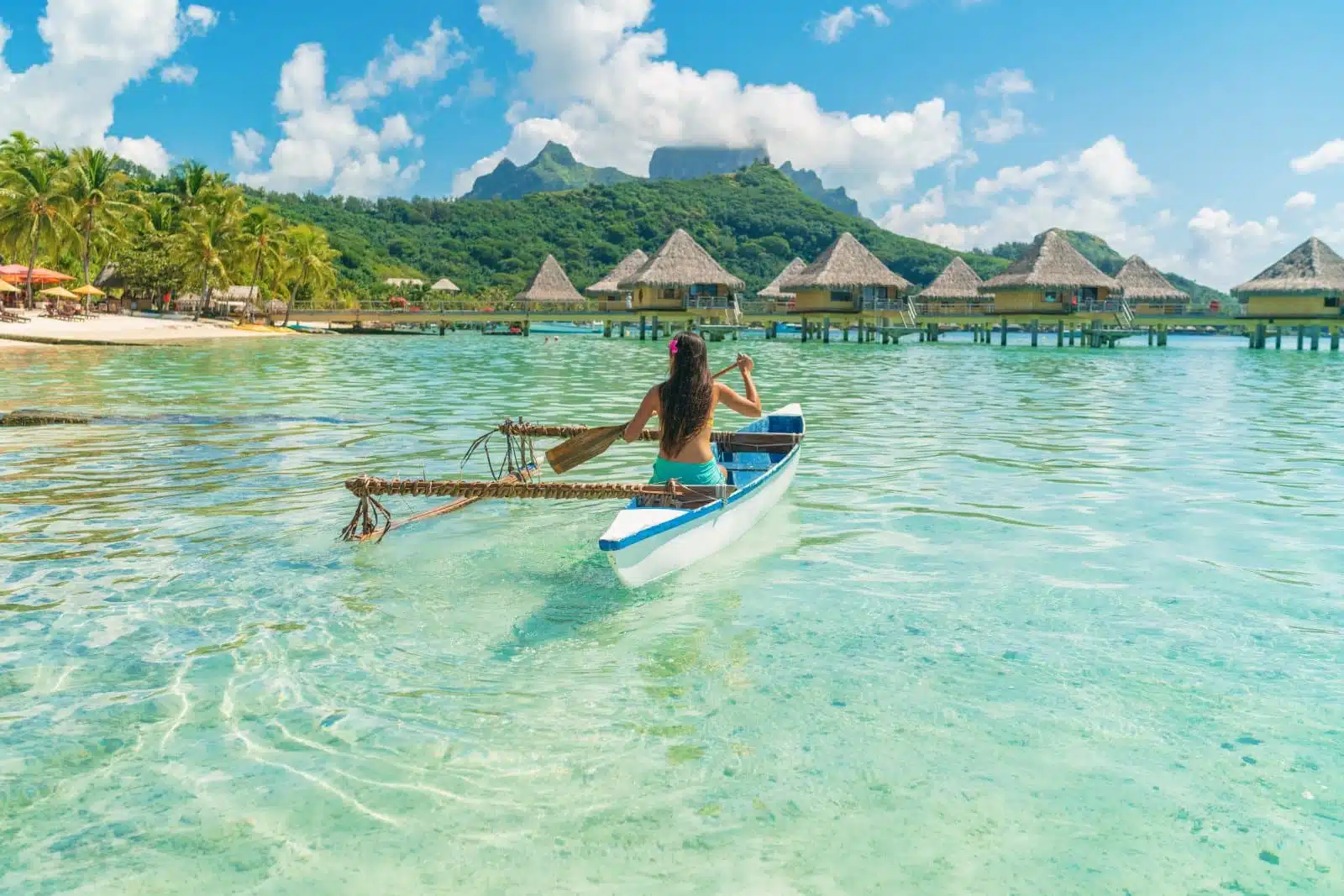
Image Credit: Shutterstock / Maridav
French Polynesia’s islands, each with its distinct character and allure, offer a kaleidoscope of experiences for travelers. From the historical depth and natural splendor of Nuku Hiva and Mangareva to the remote tranquility of the Austral Islands, this guide has traversed the breadth of French Polynesia, offering insights into its diverse landscapes, rich cultures, and unique traditions. Whether you’re drawn to the adventure of exploring ancient archaeological sites, the serenity of secluded lagoons, or the joy of engaging with local communities and their traditions, French Polynesia beckons with the promise of unforgettable experiences. As you plan your journey, remember to travel respectfully, embracing the spirit of Mana and the profound connections it fosters between people, nature, and the cosmos.
More From The Green Voyage
12 Best Practices for Sustainable Travel in 2024 – How to Travel With Minimal Environmental Impact
Unlocking Hotel Perks – A Traveler’s Guide to Maximizing Hotel Reward Programs for Optimal Benefits
Travel Hacks for Frequent Flyers – 6 Tips and Tricks to Make the Best of Air Travel
The post A Country Guide to French Polynesia first appeared on The Green Voyage.
Featured Image Credit: Shutterstock / Maridav.
For transparency, this content was partly developed with AI assistance and carefully curated by an experienced editor to be informative and ensure accuracy.
